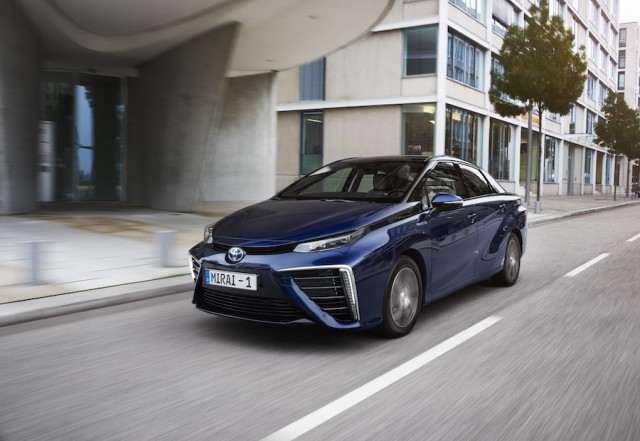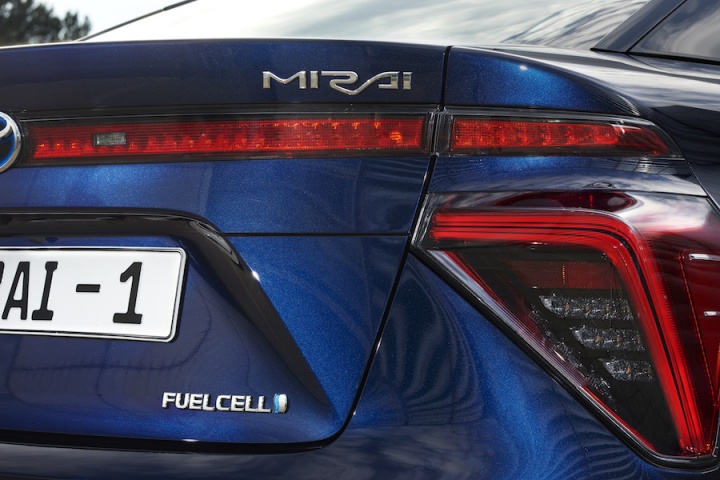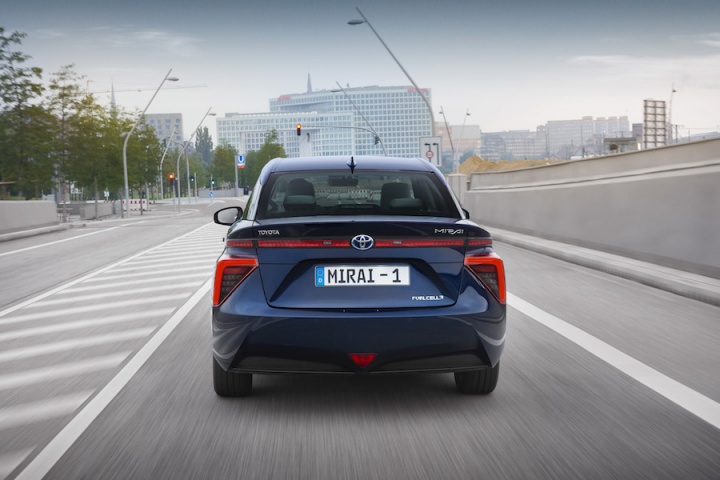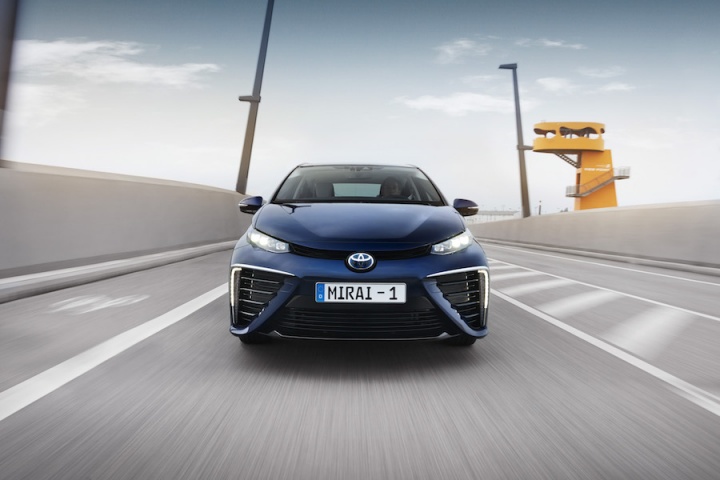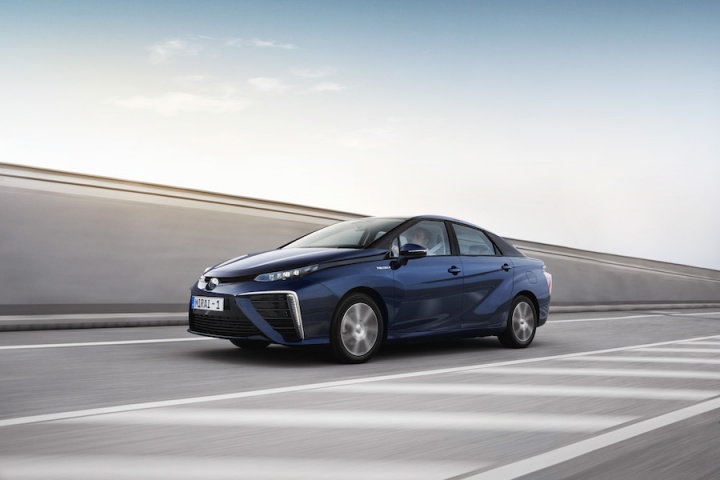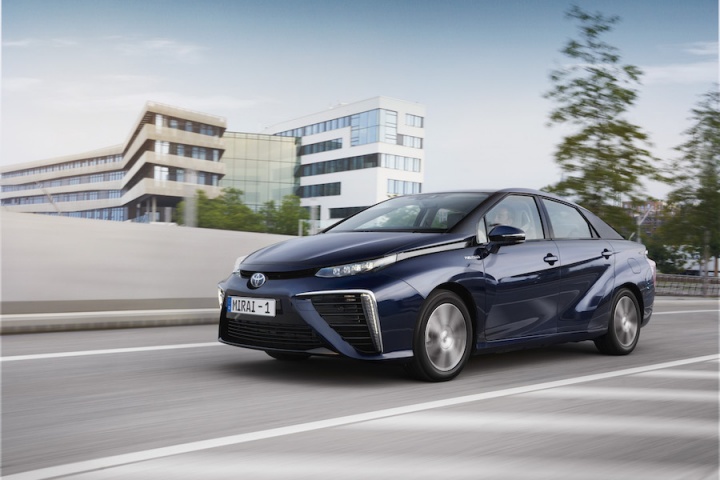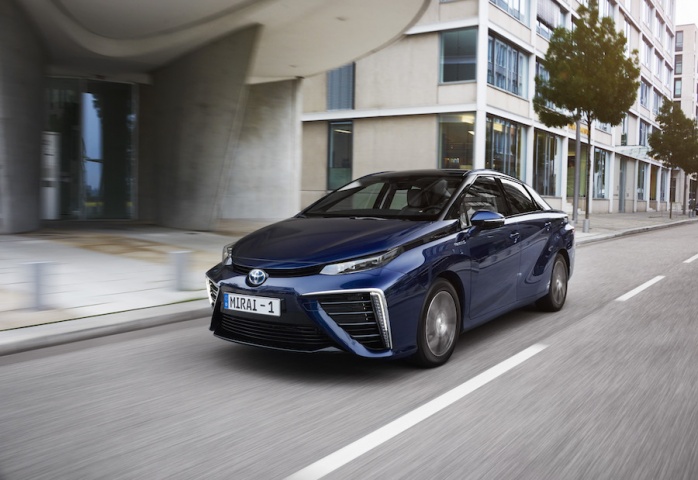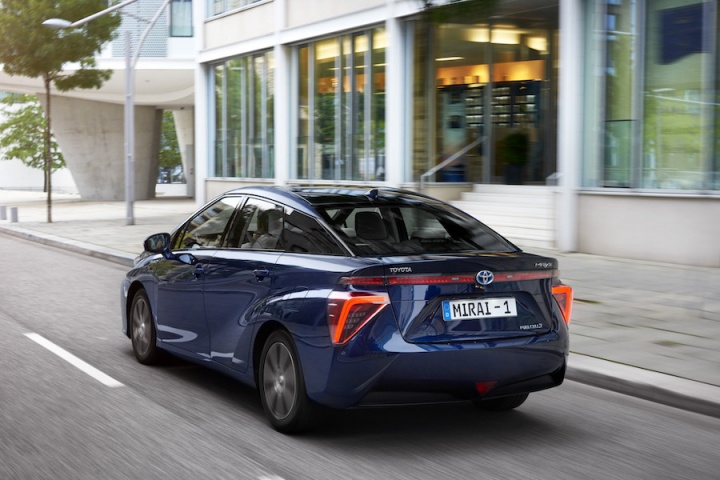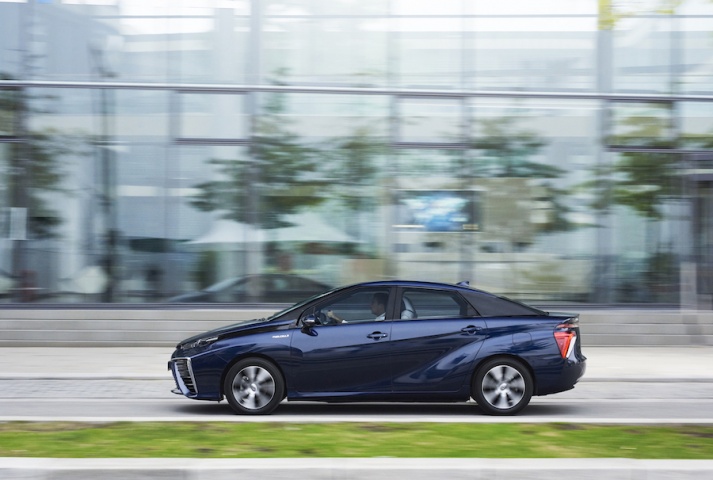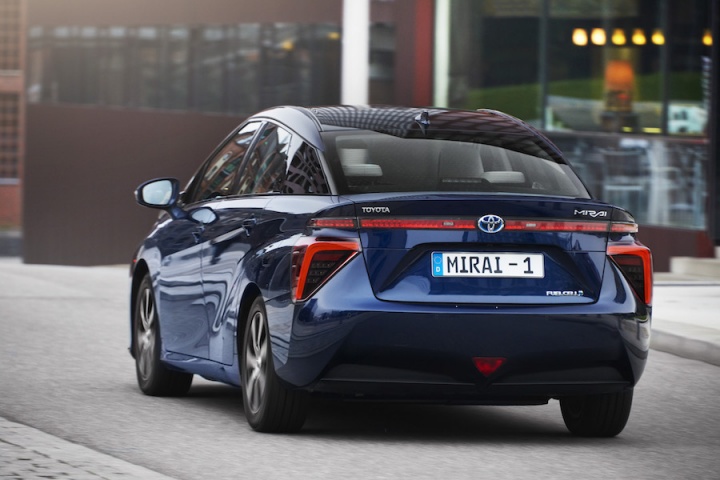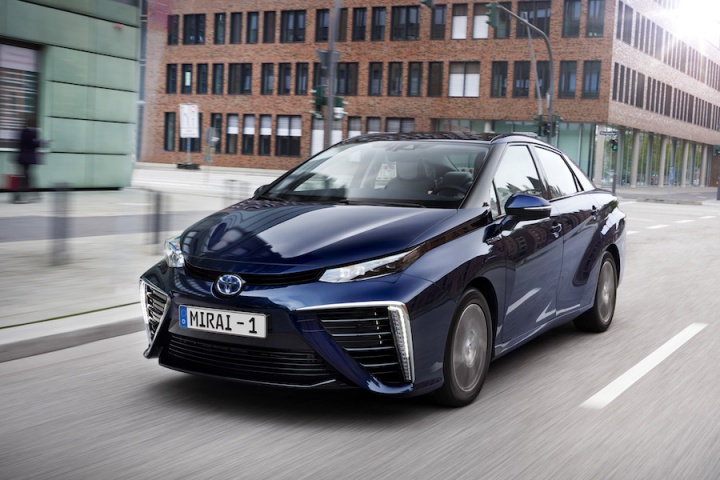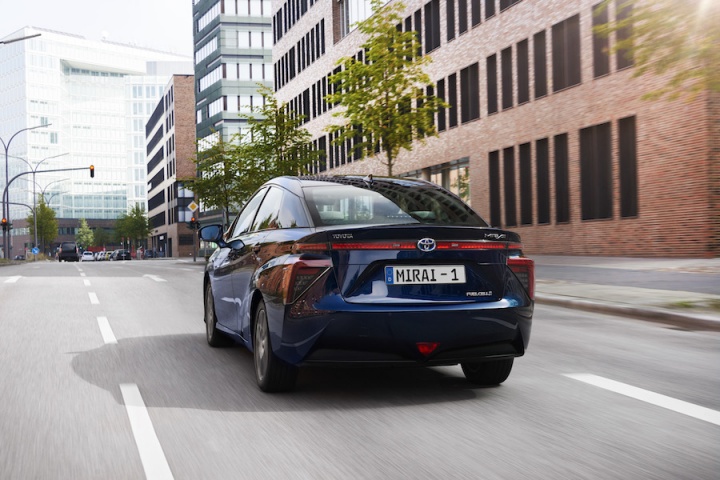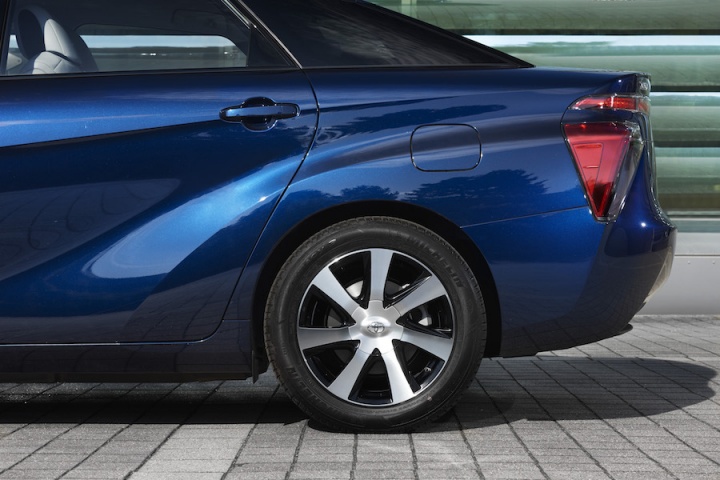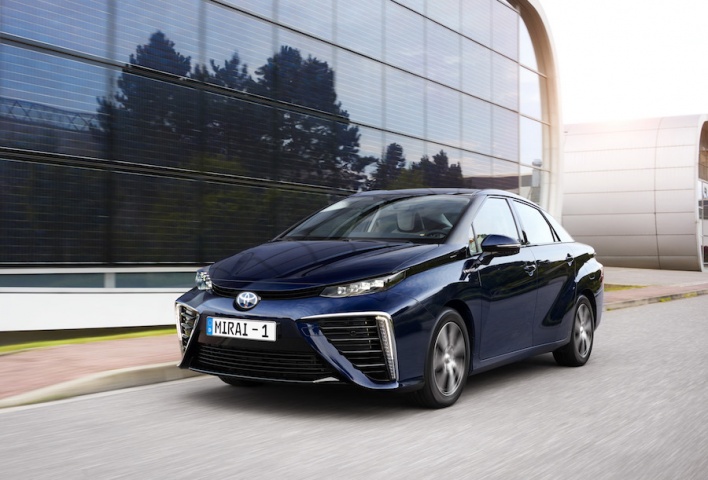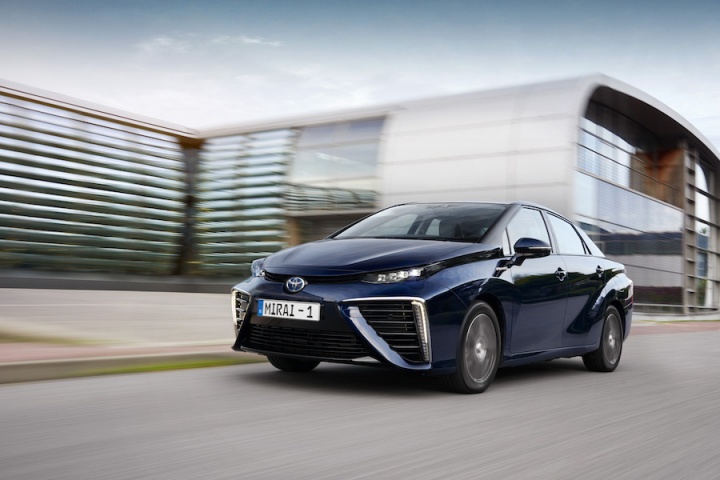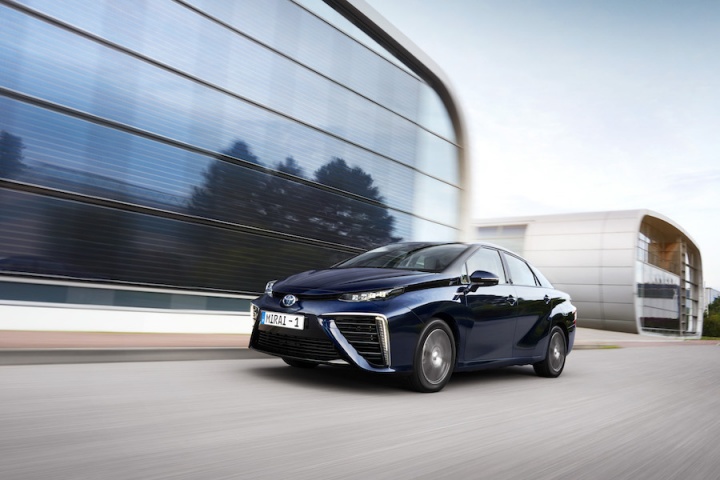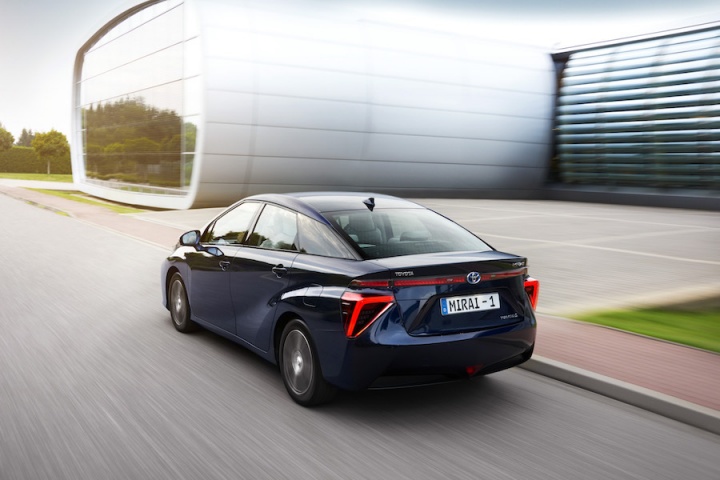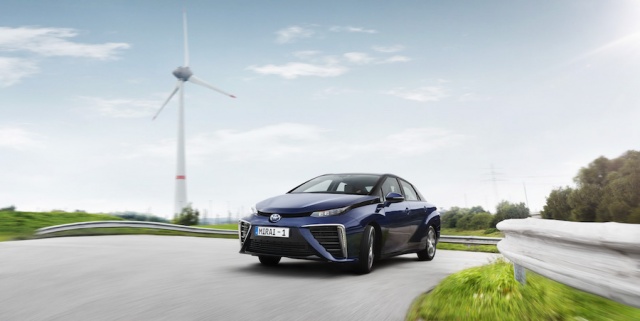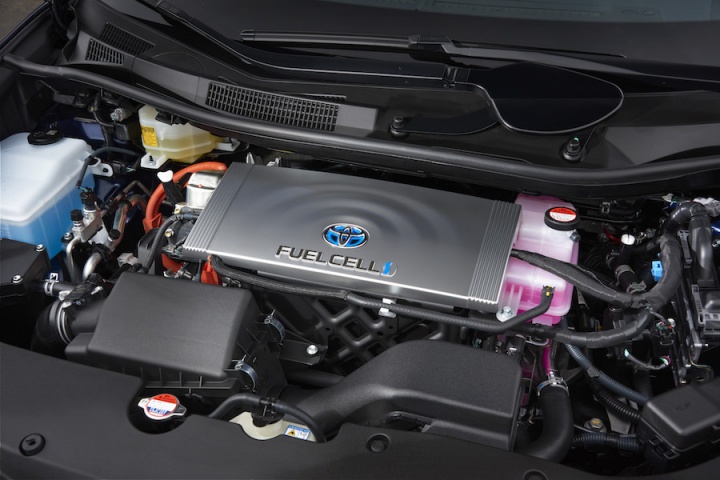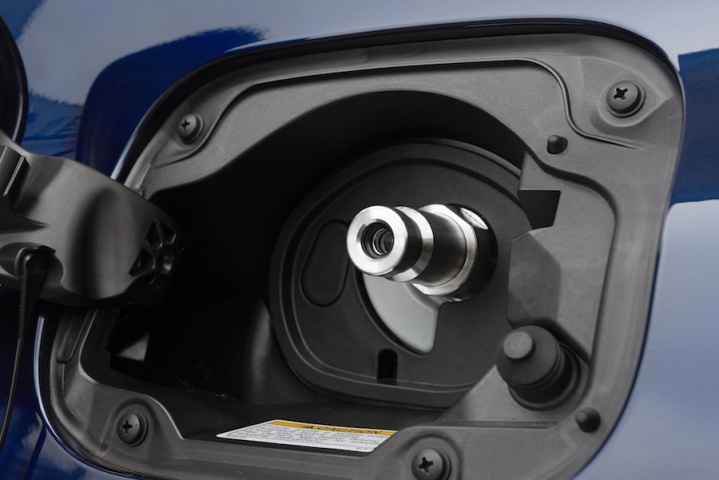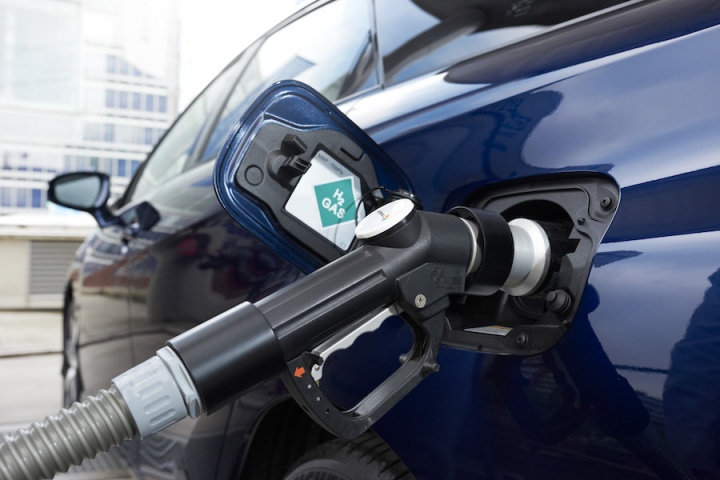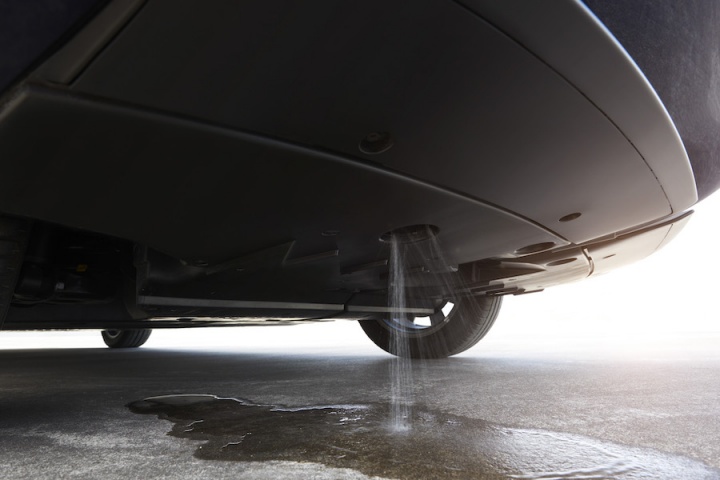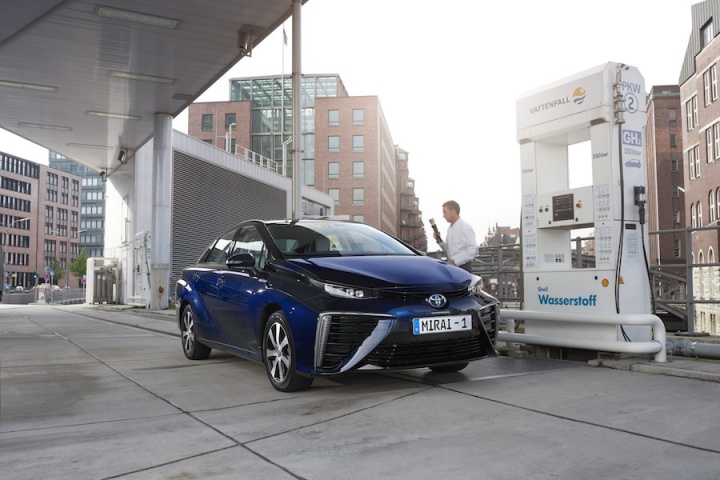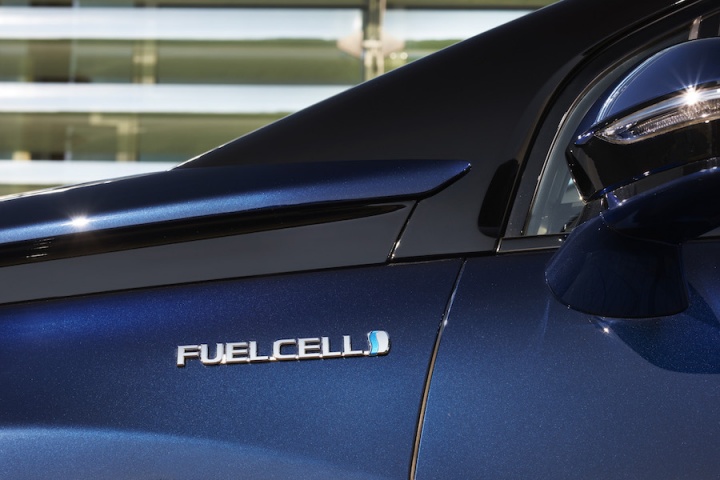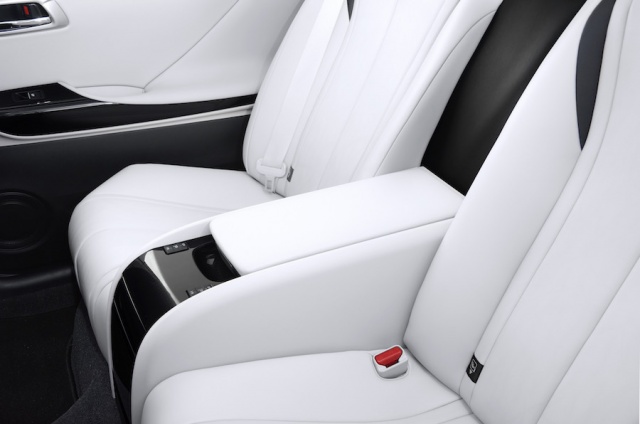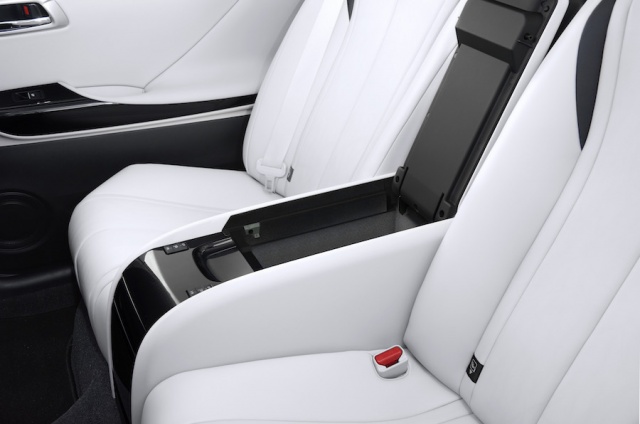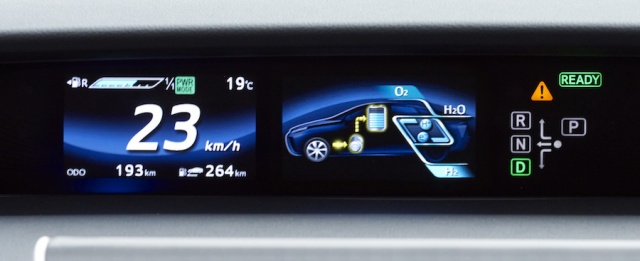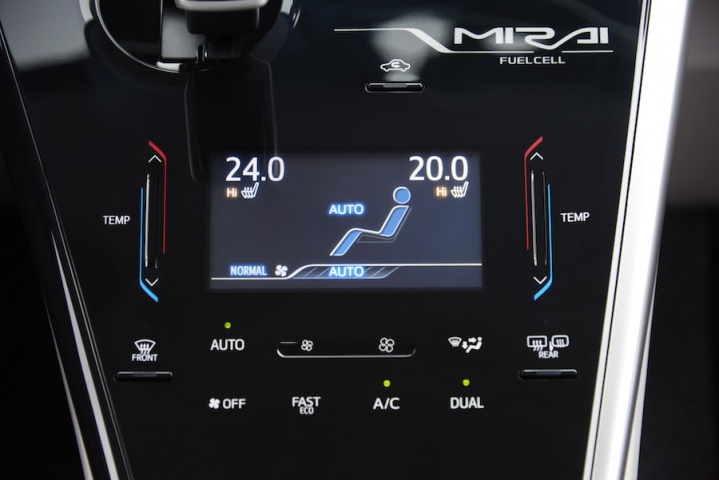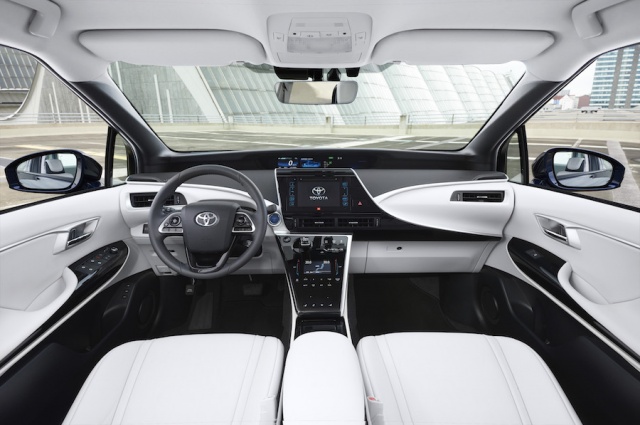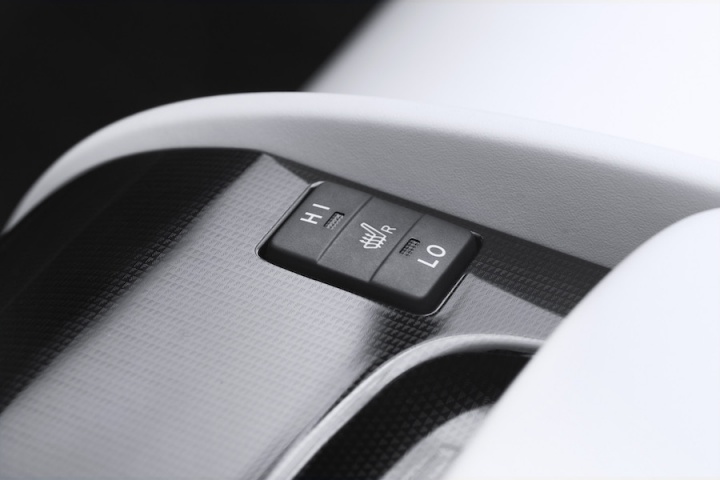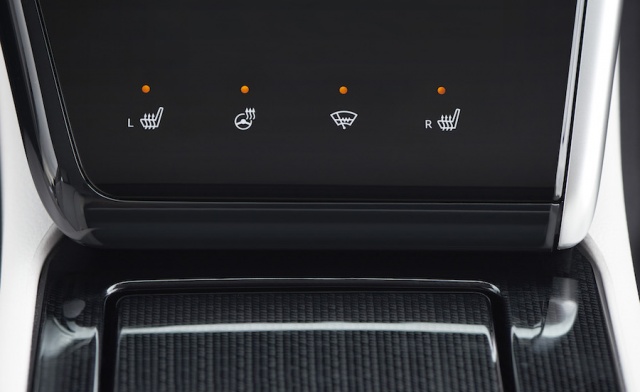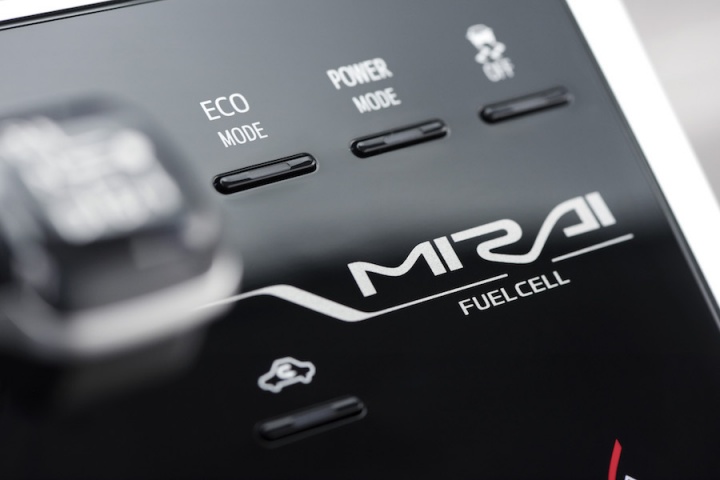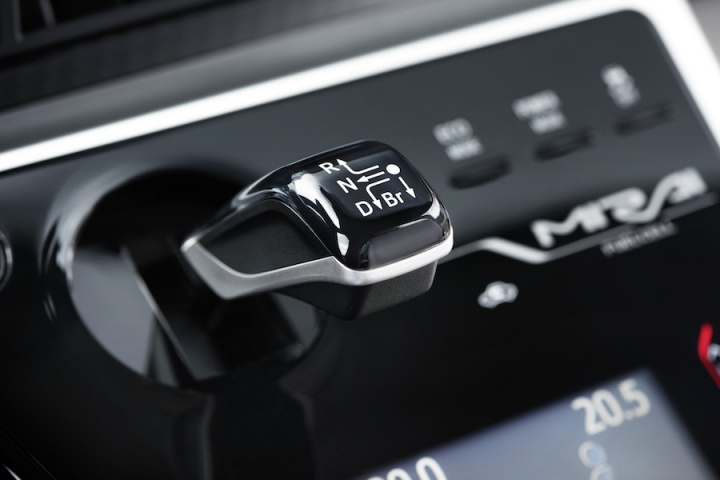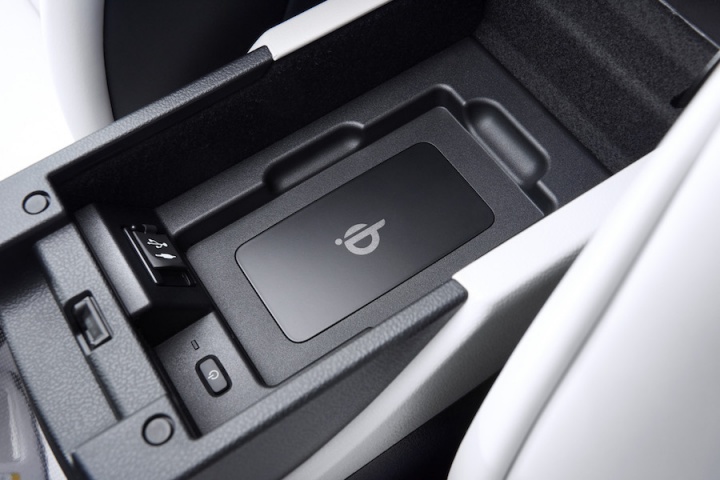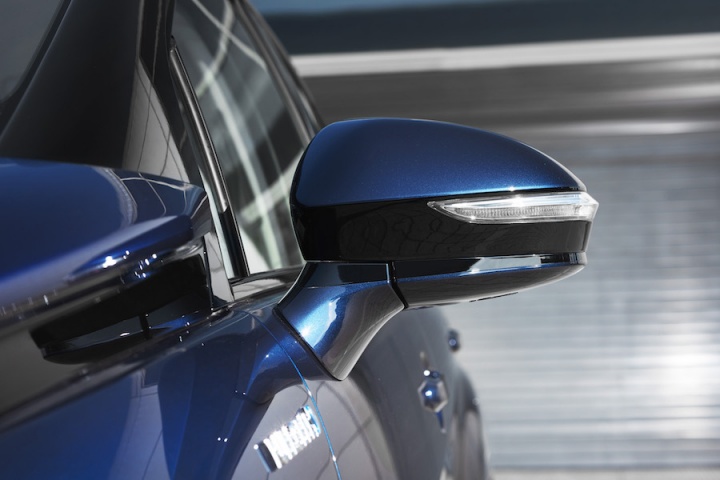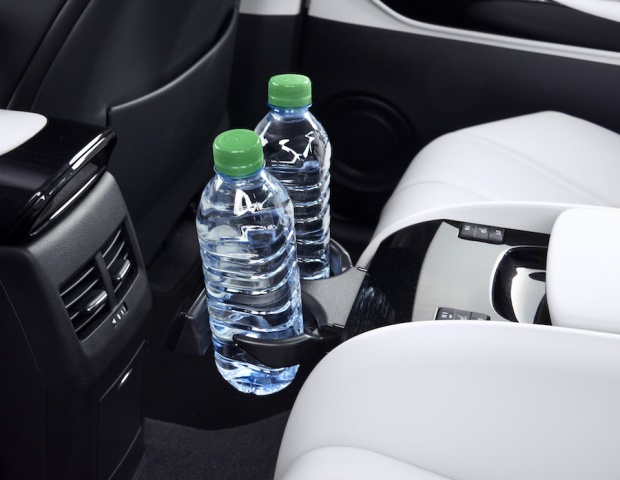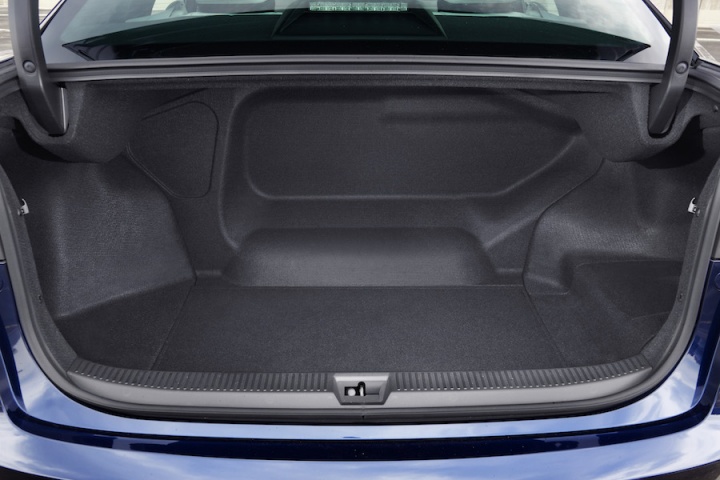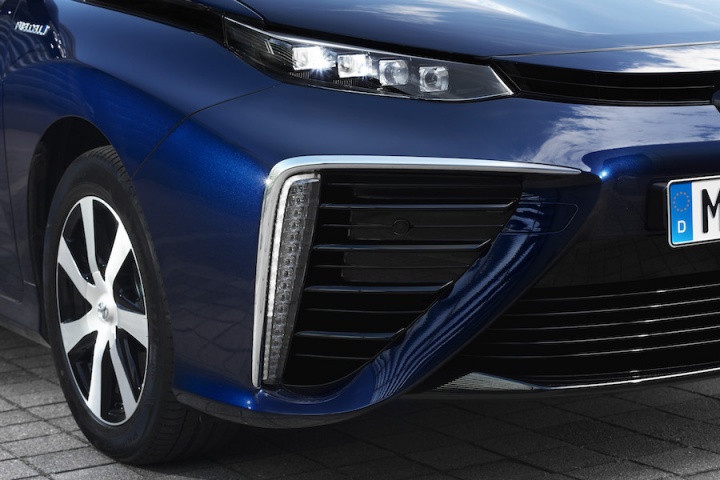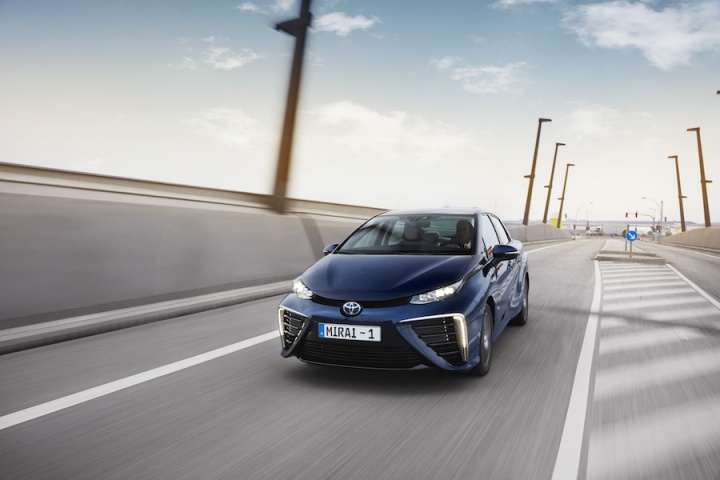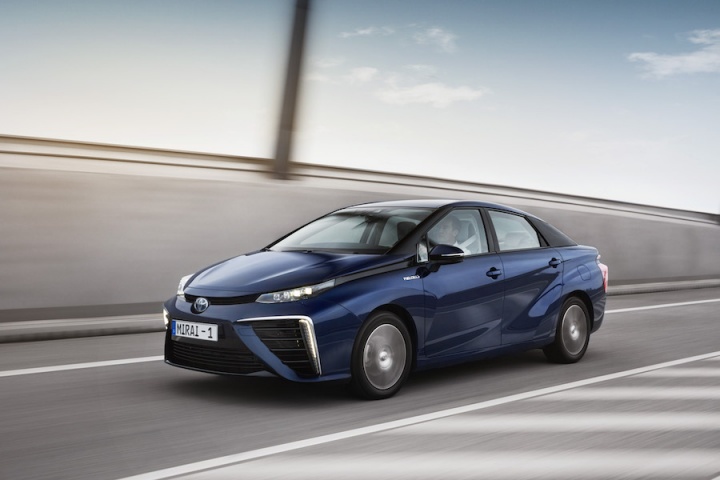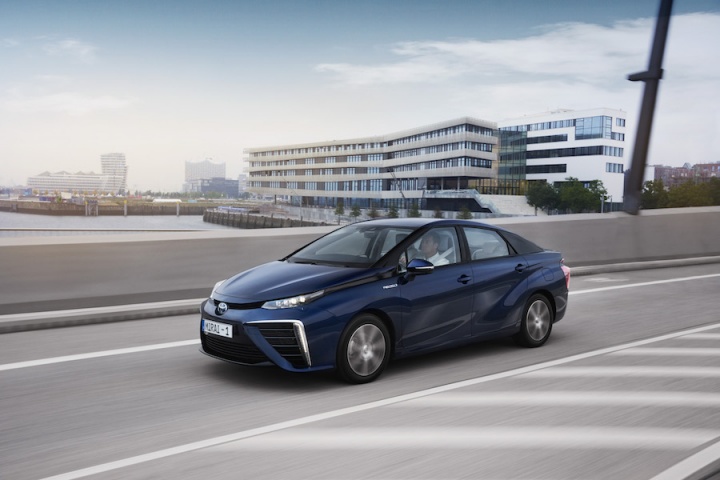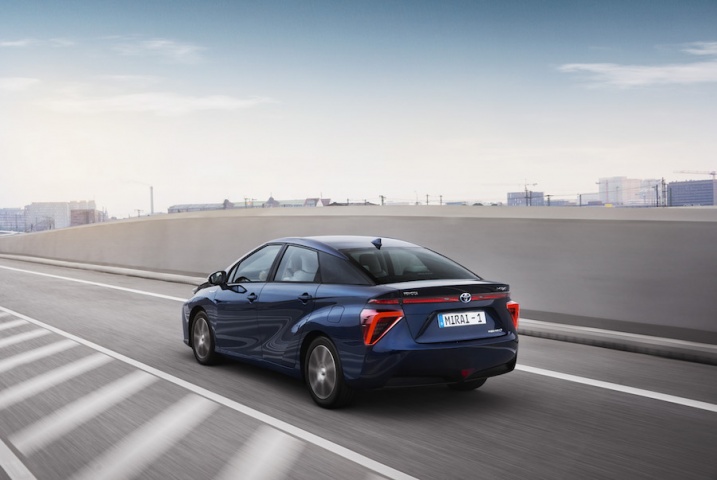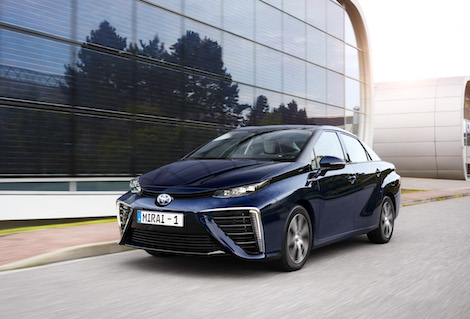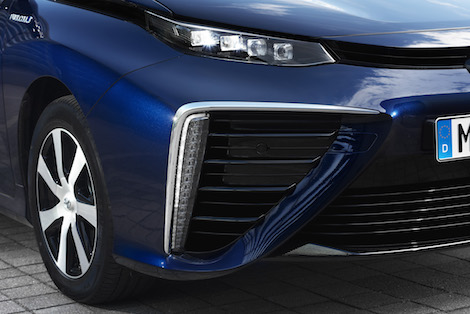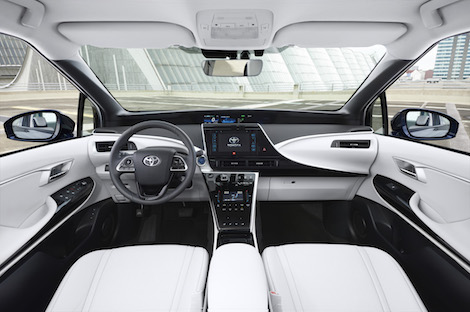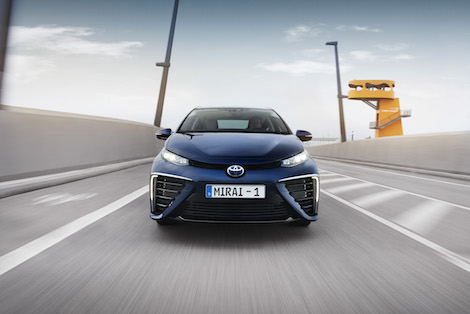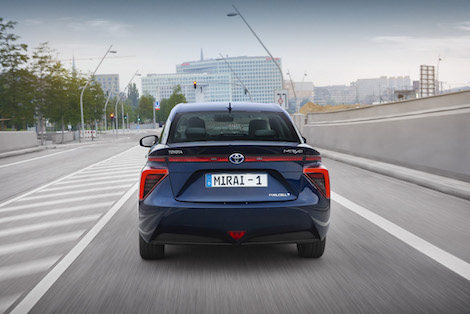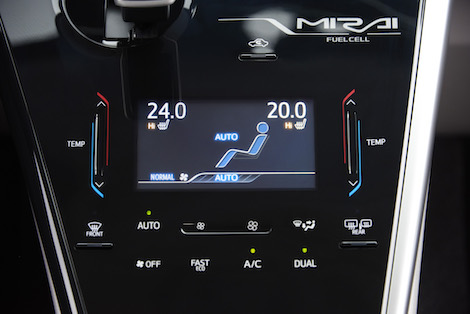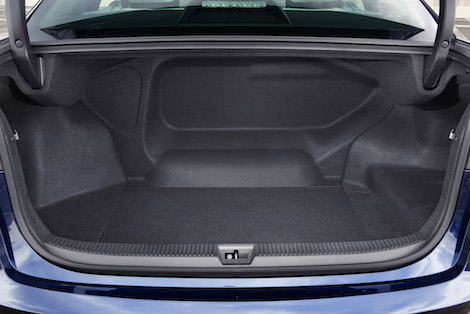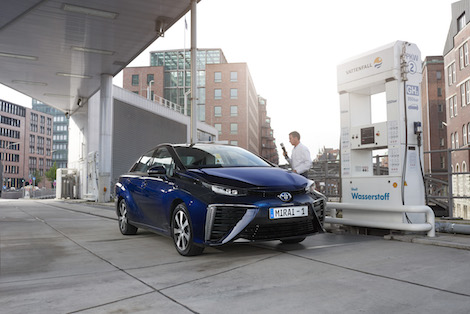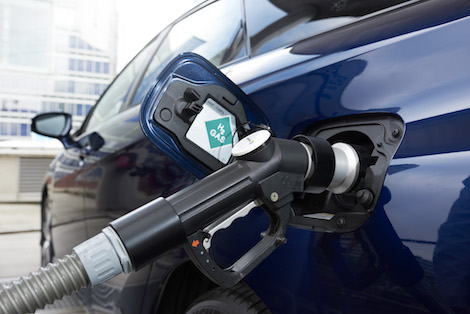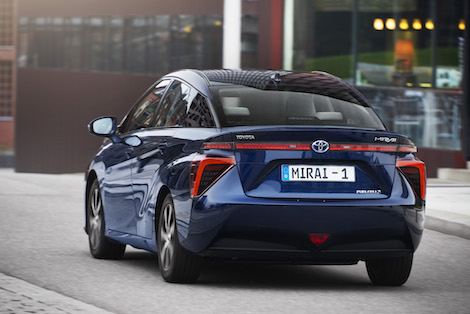Overall rating: 5/5
A five-out-of-five rating goes to the Toyota Mirai for being forward-thinking, clever and simple to use. As for its potential success? That's possibly another story...
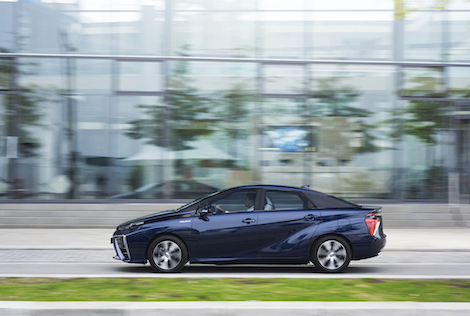
In the metal 4/5
You should probably more or less forget about the way the Toyota Mirai looks because it is, to say the least, aesthetically challenging. It's a riot of off-angles, mysterious pontoons and tucked-away lights. It's a bit futuristic and bit retro-futuristic at the same time. It's not unpleasant though, and looks notably rather nicer in white than in the blue colour it's mostly been hitherto presented in. Basically, think of it as a Ferrari Enzo with four doors and a social conscience - like the Enzo it's a somewhat ugly design, subordinated almost totally to achieving a good aerodynamic performance, which becomes somewhat attractive because you know that there are interesting things going on under the skin.
Inside, it's a lot more conventional and, perhaps unsurprisingly, quite Prius like, but with an added dose of Lexus-esque quality that goes some way to meeting the expectations of that lofty price tag. The big, comfy seats are covered in leather and the various controls and screens drip with hefty quality. It feels brilliant to use, and looks almost as good. Only one or two slightly cheap-looking switches let the side down, but they're mostly tucked away. The main instrument panel, a wide but shallow TFT screen mounted high up in the centre of the dash, could also do with looking a little less arcade-y and there's frequently a bit too much information going on, but it's kinda cool all the same.
Of course, the real interest is underneath, and I mean directly underneath, because you're sitting on top of the hydrogen fuel cell stack. It uses 370 individual cells for a 154hp output, with 335Nm of torque. That's a significant improvement (of almost 50 per cent in terms of power, and 50 per cent again in terms of weight and size) compared to where hydrogen fuel cells were less than a decade ago. Without digging into the dusty recesses of my secondary school chemistry lessons, a fuel cell works by chemically combining compressed hydrogen (taken from two small but incredibly strong tanks under the back seat and boot floor) with oxygen taken from the outside air. The process creates two things - water (hydrogen and oxygen combine to form H2O) and an electrical current that is passed to the 113kW electric motor driving the front wheels. While we have become perhaps a touch blasé about hydrogen fuel cells (and in the public imagination they have been somewhat overtaken by battery electric cars in terms of fame and potential) this is seriously clever stuff. Not only is the whole system smaller and lighter (by huge amounts) than it was, but it's also more powerful and in spite of, basically, using the constituent parts of water as fuel, it will function in temperatures down to -30 degrees C, according to Toyota. The cutting edge of automotive technology gets no keener than this.
Driving it 3/5
If we seem to have given the Toyota Mirai an unfairly low score here, it's simply because it's not much fun to drive. It drives very much like a bigger, plusher Toyota Prius. The steering is light and lacking utterly in feel, and while it trundles along happily enough, sudden changes of direction or swiftly taken corners are simply not its metier.
Happily, it's rather better at being exceptionally technologically advanced. In terms of performance, it drives very much like an electric car - hardly surprising as it basically is one, but one whose batteries top themselves up as they go. Toyota claims that it will go for 550km on a single 5.7kg fill-up of hydrogen, which seems utterly believable from our decently lengthy test drive in and around the city of Hamburg (chosen because it has taken a lead on installing hydrogen filling stations). With 335Nm of torque on tap from the moment you step on the pedal, initial performance is pleasingly brisk (and accompanied by a huffing and whistling from underneath your seat, almost as if someone's left an old Citroen Hydragas suspension unit down there) as the fuel cell does its stuff. Performance is analogous to a mid-size diesel at first, but as the speed and notional revs rise, performance does tail off. Banzai overtaking manoeuvres are best avoided.
It is wonderfully silent though, certainly on the smooth and expertly laid Hanseatic tarmac on which we were driving. Wind noise is reduced to a soft flutter around the edges of the door, while tyre noise is expertly quelled. It chuffs along nicely on motorways, maintaining a steady 120km/h without seeming to bother its fuel gauge, so is much more relaxing in those circumstances than most current electric cars.
Refuelling is a doddle, assuming you can find a hydrogen filling station. Don't bother looking for one - there are none (nor none planned as yet) for Ireland and only a handful in Europe. The EU has dedicated €650 million to improving hydrogen infrastructure over the next five years, and expect the motor industry to contribute a similar amount, but for now the cost of installing a hydrogen station runs about €1-1.5 million, so don't expect to see one on every street corner. Still, assuming you can find one, you simply pull up, latch on the pressurised pump and push a button. Between three and five minutes later your tank is full, a massive advantage over the charging times for battery cars.
Ultimately, if it's slightly unremarkable to drive from a purely dynamic point of view (and it is) then it is at least supremely relaxing and refined.
What you get for your money N/A
This is where it gets tricky. Toyota Ireland reckons that the Mirai would retail here for a price of around the €80,000 mark if it arrived on a boat in the morning. It won't do though - there are no hydrogen stations in Ireland so it can't be sold here yet. Toyota is trying to arrange discussions at ministerial level in Dáil Éireann, but those are unlikely to happen before next year's general election. Even when and if they do happen, there's little or no guarantee that there will be any government support for a hydrogen fuelling infrastructure, given the continuing lack of major interest in EVs. And that government support is needed if we're ever to have enough fuelling stations to make hydrogen power useable.
Do we need it? Theoretically, we're on the cusp of pure electric cars that can match the Mirai's range (a Tesla Model S almost already does and more are coming from other car makers soon) and we already have at least the beginnings of an electric car charging network. So there's a good chance that for all of Toyota's technical brilliance in building the Mirai and making its technology so simply accessible, that that technology has already been overtaken. There is also the issue of getting the hydrogen to the car. Yes, you can generate hydrogen cleanly from renewable sources but for now most industrial hydrogen is a by-product of the petro-chemical industry. Is the Mirai already a dead end?
Perhaps not. Toyota's chief engineer on the Mirai, Yoshikazu Tanaka made a couple of interesting points. "We don't see that there is just one solution to mobility. EVs have their place, but generally only for shorter range journeys. Then you have hybrids and plugin hybrids. Fuel cell is the best solution for longer journeys and for larger vehicles. And while there are infrastructural shortcomings now, in the future electricity prices are going to increase and hydrogen is a very good way of capturing and storing the energy created by intermittent clean sources such as wind power." In other words, just because EVs are in the ascendance right now, it doesn't follow that they always will be, and any company that bets the farm on one source of power could be on for a major loss.
Alternatives
Honda FCV: due to be unveiled at the Tokyo Motor Show in production ready format, Honda will bring the Mirai's first rival to the market next year.
Hyundai ix35 Fuel Cell: still a prototype but proof that a fuel cell stack can fit and function in an entirely conventional car.
Tesla Model S: expensive enough to make the Toyota look like a bargain and blisteringly fast too. But relatively long recharging times beckon.
Summary
The really appealing thing about the Toyota Mirai is its simplicity. You get in, push a button and drive off as you would in any existing car. As your hydrogen tank empties, you find a filling station (admittedly only if you live in some very specific geographic areas right now), spend about five minutes filling up and off you go again. It's familiarity in spite of its technological advancement is its trump card. Unfortunately there's no getting away from the fact that, in a specifically Irish context, it's all but pointless for now. Considering the cost of each car to Toyota, including its development budget, it risks flirting with expensive failure.
But it's not. It's a very early days proof-of-concept really, a production car that's also a rolling test bed, and a call to arms for those keen on the idea of clean, plentiful hydrogen power, along with proof that the basic idea works pretty well. The Mirai isn't necessarily THE answer to all future motoring questions, but could certainly be one of them.

